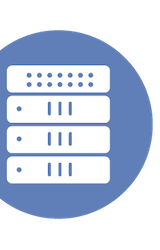Cisco Catalyst 3850 SFP Fiber Switch Announcement at CLUS 2014
Event: Tech Field Day Extra at Cisco Live US 2014
Appearance: Cisco Tech Field Day Roundtable at Cisco Live US 2014
Company: Cisco Mobility
Video Links:
- Vimeo: Cisco Catalyst 3850 SFP Fiber Switch Announcement at CLUS 2014
- YouTube: Cisco Catalyst 3850 SFP Fiber Switch Announcement at CLUS 2014
Personnel: Steven Song
On May 19, 2014, at Cisco Live US, Steven Song, a senior marketing manager at Cisco, announced the new Cisco Catalyst 3850 SFP Fiber Switch. This announcement was part of a larger presentation on the Cisco Catalyst 3850 switch family, which was initially introduced at Cisco Live London the previous year. The Catalyst 3850 series integrates wireless LAN controller functionality into the switching platform, providing a unified solution for both mobility and LAN switching needs. The series also features the Unified Access Data Plane (UADP) ASIC, which offers network programmability and performance, allowing customers to upgrade their iOS software to support new protocols and features in the future.
The new Catalyst 3850 fiber switch maintains the same hardware platform, iOS XE software, and UADP ASIC as the existing models but introduces fiber data ports for network aggregation. Two models were showcased: one with 12 data ports and another with 24 data ports, both designed to aggregate uplinks from access layer switches. The uplinks on these fiber switches come in two configurations: four 1-gigabit fiber uplinks or two 10-gigabit uplinks, making them suitable for low to medium traffic volume environments. The fiber switches can be stacked with existing copper 3850 switches, providing a seamless and unified management experience. This stacking capability is particularly beneficial for customers who have already deployed 3850 copper switches and need fiber switches for aggregation.
The presentation also highlighted the benefits and deployment scenarios of the new fiber switches. These switches expand the unified access portfolio, ensuring service consistency from the access layer to the aggregation layer. They support Cisco TrustSec for end-to-end security and offer flexible deployment options, including small campus buildings, branch offices, and high-security environments requiring fiber to the desktop. The fiber switches can cover distances up to 80 kilometers, making them ideal for connecting multiple branch offices or small buildings. The new models are available for order immediately, with the first customer shipments expected the following month. The pricing for the new fiber switches is competitive, with IP base and IP services options available, ensuring that customers have the flexibility to choose the right model for their needs.
Additional Resources:







